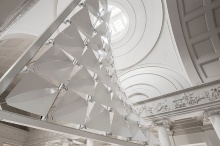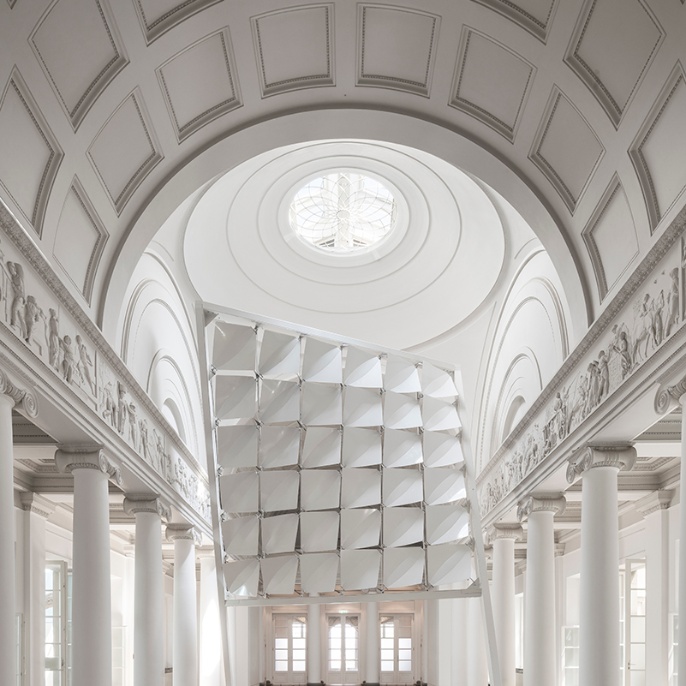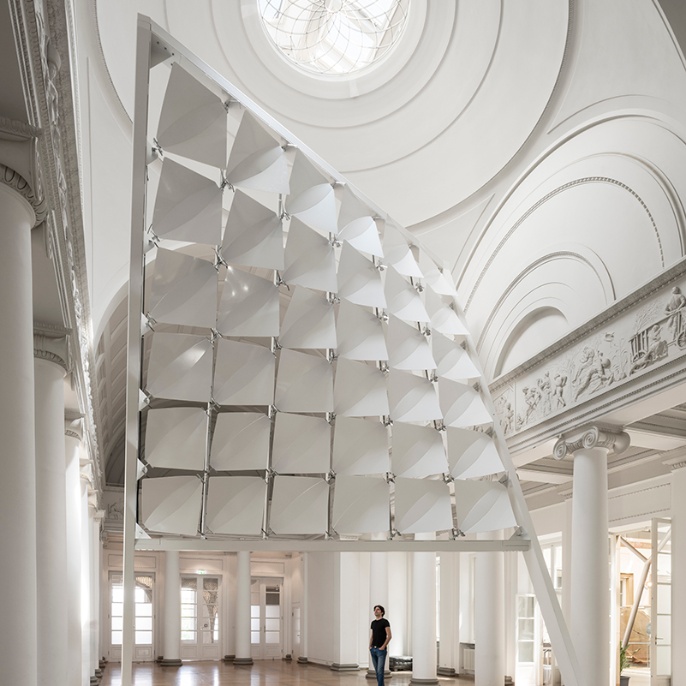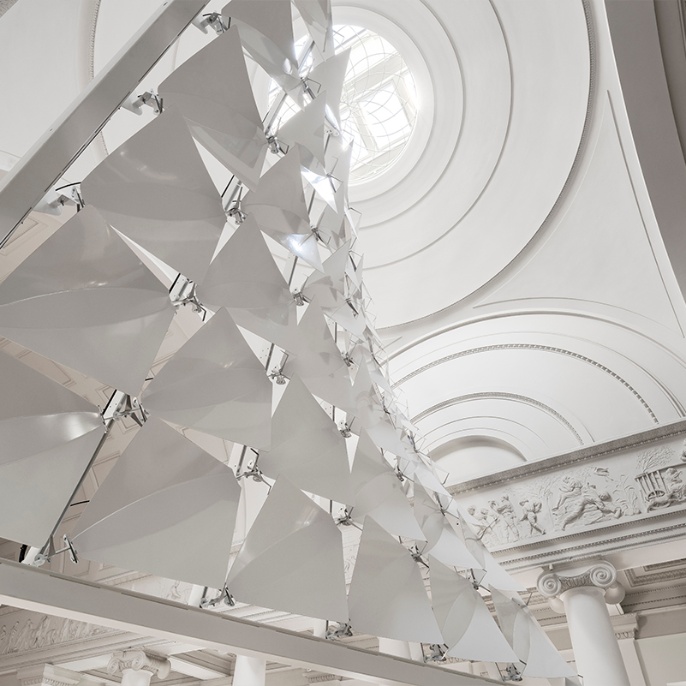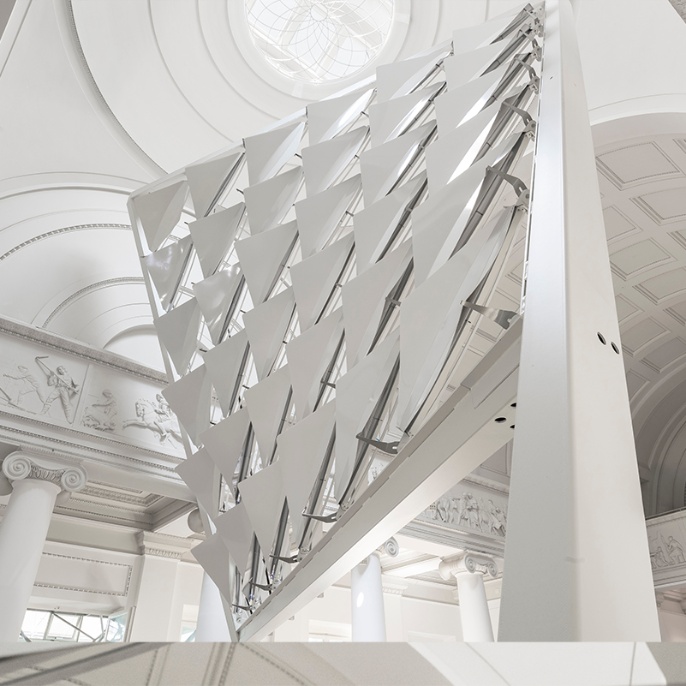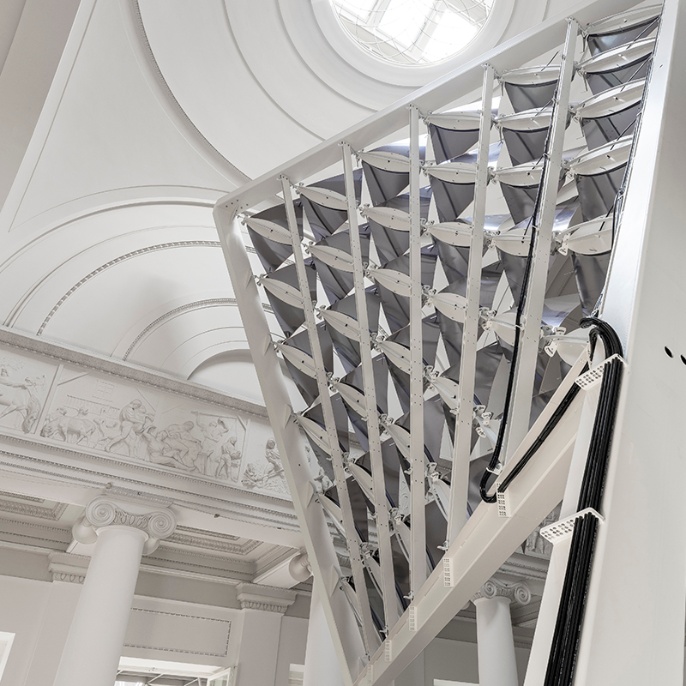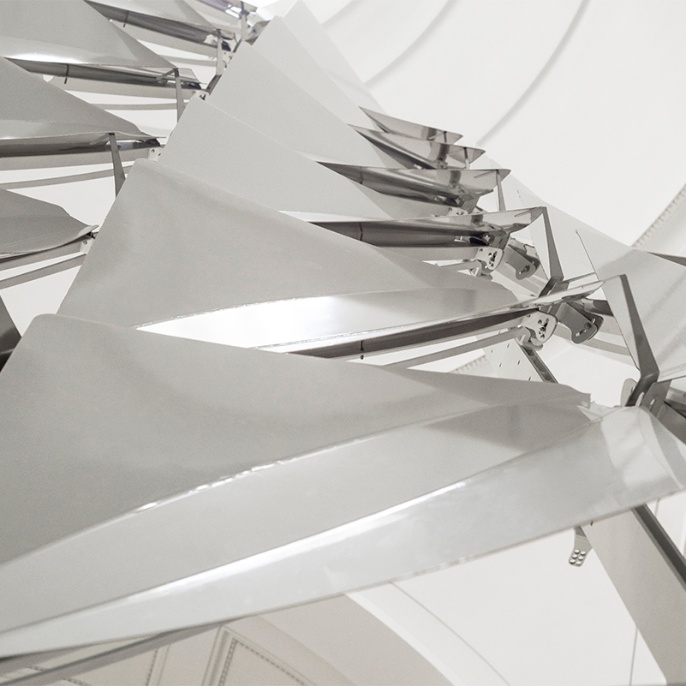FLECTOFOLD Demonstrator, BauBionik Exhibition, Natural History Museum, Stuttgart, 2018
FlectoFold is an Elastic-Kinetic Facade Shading System. It is modular and made of Materially-Graduated FRP.
This large-scale demonstrator highlights the potential of Flectofold for application on complex architectural surfaces, exhibits the kinetic performance of pneumatically-actuated and materially-graduated FRP laminates and explores the possibilities of active and autonomous modes of control and operation.
It consists of 36 Flectofold modules. Each Module Covers an area of approximately 1 m2 and has an integrated Pneumatic cushion. Once pressurized (0.04 – 0.09 Bar), the cushion induces elastic bending onto the body of the Materially-graduated FRP Laminate, and as a result generate movement and transformation. The modules are propagated on an anticlastic guiding surface and the steel sub-structure support them in space, aligns them accurately on the guiding surface, and provides all necessary detailing for integration of pneumatic actuators. The control system enables the driving of modules in an individual or synchronized fashion, based on active user input or pre-programmed sequences.
Flectofold was exhibited as part of the BauBionik Exhibition from 17.10.2017 to 01.05.2018 at the Natural History Museum in Stuttgart, Germany.
PROJECT TEAM
ITKE Institute of Building Structures and Structural Design
University of Stuttgart
Prof. Dr.-Ing. Jan Knippers
ITFT Institute for Textile and Fiber Technologies
University of Stuttgart
Prof. Dr.-Ing. Götz T. Gresser
PBG Plant Biomechanics Group, Botanical Garden
University of Freiburg
Prof. Dr. Thomas Speck
IBB Institute for Structural Mechanics
University of Stuttgart
Prof. Dr.-Ing. habil. Manfred Bischoff
DESIGN DEVELOPMENT
Saman Saffarian
SCIENTIFIC DEVELOPMENT
Larissa Born, Axel Körner, Anja Mader, Renate Sachse, Saman Saffarian, Anna Westermeier, Dr. Simon Poppinga, Dr. Simon Schleicher
WITH SUPPORT OF:
Sandie Kate Fenton, Dongyuan Liu, Tessa Rudolph, Behrooz Tahanzadeh
This research has been funded by the German Research Foundation (DFG) as part of the Transregional Research Centre (SFB/Transregio) 141 ‘Biological Design and Integrative Structures’/projects A03 and A04 and by InnoChain, European Union’s Horizon 2020 research and innovation programme under the Marie-Curie grant agreement No 642877.


